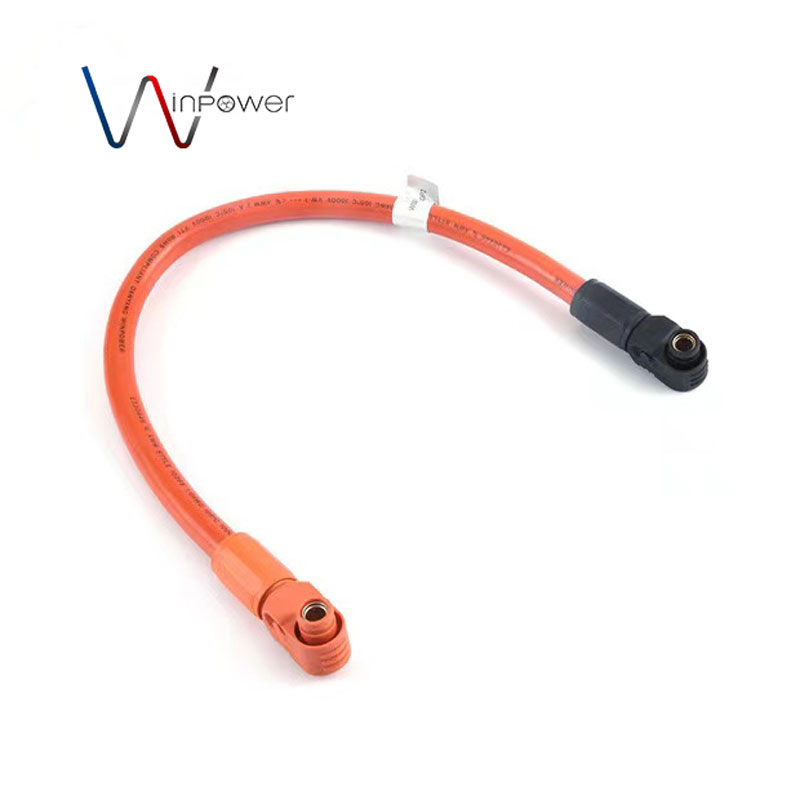Custom Motor Harness
A motor harness is an essential wiring solution designed to connect motors with control units, power sources, and sensors in various electrical systems. Built for high performance and reliability, motor harnesses ensure the seamless transmission of power, signals, and data between motors and their controlling systems. These harnesses are widely used in industries such as automotive, robotics, industrial automation, and home appliances, where precise control, durability, and safety are critical.
Key Features:
- High-Performance Wiring: Motor harnesses are constructed using high-quality, low-resistance wires to deliver efficient power and signal transmission, ensuring optimal motor performance and minimal energy loss.
- Durable and Heat-Resistant: Designed to withstand high temperatures, vibrations, and mechanical stress, motor harnesses are made from heat-resistant materials, ensuring longevity in harsh conditions.
- EMI/RFI Shielding: Many motor harnesses feature electromagnetic interference (EMI) and radio-frequency interference (RFI) shielding to protect against signal disruption, making them ideal for use in noisy electrical environments.
- Precision Control: These harnesses are engineered to provide accurate signal transmission for precise motor control, which is essential for applications requiring fine-tuned motor operations.
- Safety and Compliance: Motor harnesses are built to meet stringent safety and regulatory standards, ensuring that they provide secure connections and protect against electrical hazards like short circuits or overloading.
Types of Motor Harnesses:
- DC Motor Harness: Designed for direct current (DC) motors, these harnesses are commonly used in automotive applications, consumer electronics, and small motor-driven devices.
- AC Motor Harness: Used in alternating current (AC) motor systems, these harnesses are ideal for larger motors found in industrial automation, HVAC systems, and electric appliances.
- Servo Motor Harness: Built for precision control of servo motors, these harnesses are essential in robotics, CNC machinery, and automated production lines where precise movements are crucial.
- Stepper Motor Harness: Designed for stepper motors, these harnesses facilitate fine-tuned control of motor positioning, commonly used in printers, CNC machines, and medical devices.
- Hybrid Motor Harness: Used for hybrid systems, these harnesses can connect both AC and DC motors to a single control unit, offering flexibility for complex motor systems.
Application Scenarios:
- Automotive Industry: Motor harnesses play a vital role in electric vehicles (EVs) and conventional cars, connecting motors for various systems such as electric windows, power steering, windshield wipers, and the main propulsion in EVs.
- Industrial Automation: In factory settings, motor harnesses are used to connect motors in automated production lines, conveyor belts, robotic arms, and heavy machinery, ensuring reliable power and control for smooth operations.
- Robotics: Motor harnesses are essential in robotic systems, where they enable the connection of motors that control robotic joints and movements. These harnesses provide the precision required for robotic tasks in manufacturing, healthcare, and service industries.
- HVAC Systems: In heating, ventilation, and air conditioning (HVAC) systems, motor harnesses ensure efficient operation of fans, compressors, and pumps, providing power and control for regulating temperature and air flow in buildings.
- Home Appliances: Common in household devices such as washing machines, refrigerators, and vacuum cleaners, motor harnesses ensure smooth motor operations for reliable and energy-efficient performance.
- Medical Devices: In medical equipment, motor harnesses are used in devices such as infusion pumps, patient beds, and surgical robots, ensuring precise control of motorized functions critical for patient care.
Customization Capabilities:
- Custom Wire Lengths and Gauges: Motor harnesses can be customized with specific wire lengths and gauges based on the motor’s power requirements and system layout, optimizing performance and space management.
- Connector Options: Harnesses can be designed with a wide range of connectors to suit different motor and control unit types, including Molex, Deutsch, AMP, and proprietary connectors for specialized systems.
- Temperature-Resistant Materials: Harnesses can be built using materials that offer increased resistance to heat, cold, moisture, and chemicals, making them suitable for extreme environments like automotive engines or outdoor industrial setups.
- Shielding and Insulation: Custom EMI/RFI shielding and specialized insulation options are available to protect against environmental factors and ensure signal integrity in high-noise environments.
- Waterproof and Ruggedized Options: For outdoor or demanding industrial applications, harnesses can be customized with waterproof connectors, rugged casings, and additional protective layers to enhance durability.
Development Trends:
- Increased Demand for Electric Vehicles (EVs): The global shift toward electric vehicles is driving innovation in motor harnesses designed for EV motors and battery systems. These harnesses are being developed to handle higher power loads and ensure efficiency in long-distance driving.
- Miniaturization for Compact Devices: As technology advances, there’s a growing demand for smaller, lighter motor harnesses that can fit into compact devices, such as drones, medical equipment, and portable electronics, without sacrificing performance or reliability.
- Smart Motor Control Systems: Harnesses with integrated smart features, such as sensors and diagnostics, are becoming more popular. These smart motor harnesses monitor performance, detect faults, and predict maintenance needs, improving system reliability and reducing downtime.
- Sustainability and Energy Efficiency: Manufacturers are focusing on developing eco-friendly harnesses using recyclable materials and optimized designs that reduce energy loss and environmental impact. This trend is especially prominent in the automotive and industrial sectors, where energy efficiency is a key concern.
- Advanced Shielding Technology: As motors are used in increasingly complex electronic environments, advanced EMI/RFI shielding technologies are being incorporated into motor harnesses to ensure interference-free performance in high-noise applications, such as telecommunications and aerospace.
- Wireless Motor Control Integration: The future of motor harnesses may see the integration of wireless communication modules, reducing the need for physical wiring and enabling remote monitoring and control in applications like smart homes, autonomous vehicles, and industrial IoT systems.
In conclusion, motor harnesses are a vital component in any system that relies on motors for power and motion control. With customizable features, advanced shielding options, and rugged designs, these harnesses meet the demands of industries such as automotive, robotics, industrial automation, and beyond. As technology evolves, motor harnesses will continue to play a key role in enabling smarter, more efficient, and sustainable motor-driven systems.























